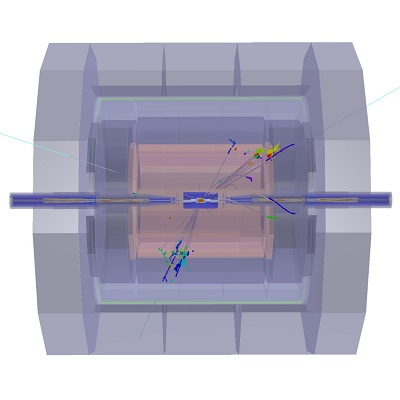AI-Powered Jet Origin Identification Technology Opens New Horizons in High-Energy Physics Research
The team led by Prof. RUAN Manqi from the Institute of High Energy Physics of the Chinese Academy of Sciences, in collaboration with the team led by Prof. ZHOU Chen from Peking University and Dr. QU Huilin from European Organization for Nuclear Research (CERN), initiated and successfully developed a jet origin identification technology. This technology can significantly enhance the scientific discovery capabilities of high-energy collider experiments. This achievement was published in the prestigious journal Physical Review Letters on May 31 (Phys. Rev. Lett. 132.221802 (2024)). The reviewers regard this work as “demonstrate the world-leading performance of tagger”, “a game changer” and “opens new horizons for precision flavor studies at all future experiments.”
Quarks and gluons are fundamental particles in the Standard Model of particle physics. Unlike electrons or photons, quarks and gluons cannot move freely in space-time but are confined within composite particles such as protons or neutrons. Colliders can produce high-energy quarks, and their interactions lead to complex particle fragmentation processes, ejecting a large number of final state particles at specific angles. This phenomenon is known as ‘jets’. Jets are abundantly produced in high-energy collision experiments, and accurately identifying the origin of jets—i.e., determining which type of quark or gluon they originate from—is crucial for uncovering and understanding the physical laws behind collider events. On the other hand, jets originating from different quarks and gluons are very similar in configuration, making accurate identification of jet origins highly challenging.
By combining the original high-performance particle flow reconstruction algorithm Arbor with advanced artificial intelligence technology ParticleNet, the research team developed an efficient jet origin identification technology. This technology captures subtle differences between different types of jets, enabling efficient discrimination among eleven different types of jets produced by five types of quarks (up, down, strange, charm, bottom), five types of antiquarks, and gluons. This technology can help scientists accurately measure the interactions between different particles and quarks and gluons, and capture extremely weak Higgs particle decay signals. It can significantly improve the precision of several key physical measurements in future colliders, greatly enhancing their scientific discovery capabilities.
This technology not only provides scientists with a powerful new tool for scientific exploration in future colliders but also demonstrates that the complex information contained in the jet production process can be understood and utilized by advanced artificial intelligence algorithms. In the future, the research team will further explore the application of artificial intelligence technology to broader and deeper high-energy physics problems.

Figure 1: Schematic Diagram of a Simulated Di-jet Event in CEPC detector
Paper link:
URL: https://link.aps.org/doi/10.1103/PhysRevLett.132.221802
DOI: 10.1103/PhysRevLett.132.221802
Contact Information
Ms. JIA Yinghua
jiayh@ihep.ac.cn